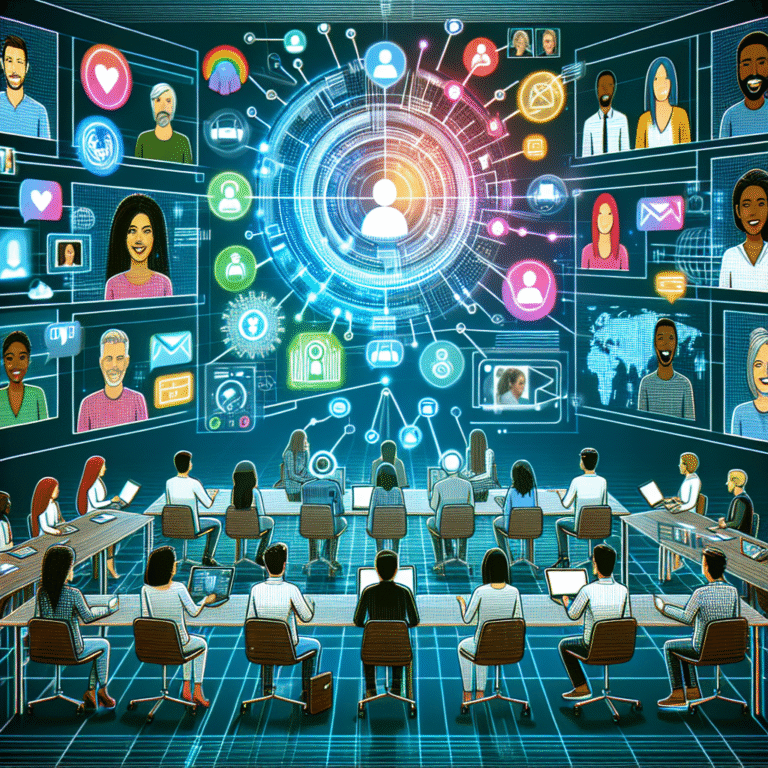
Introduction
Gender bias is not just a buzzword; it’s a pervasive issue that affects countless lives and workplaces daily. In a world striving for equality, understanding the science behind gender bias is essential. The Science of Gender Bias: What Psychology Tells Us About Our Prejudices reveals the foundational psychological principles that underlie our biases and how they manifest in our behavior, decisions, and social structures.
Imagine a job candidate perfectly qualified for a role, yet overlooked because of their gender. This scenario is not merely an exception; it’s a reflection of ingrained prejudices that affect hiring practices, promotions, and everyday interactions. The psychology behind these biases offers compelling insights that can help unravel this complex web of discrimination. By diving deeper into our prejudices, we begin to recognize the harmful effects they have on society and the workplace, leading to the question: how can we challenge these entrenched beliefs?
Understanding Gender Bias
Defining Gender Bias
Gender bias refers to the unequal treatment or consideration given to individuals based on their gender. While it often manifests in negative stereotypes and discrimination against women, it can also affect men. Psychologically, gender bias stems from deeply rooted societal norms, stereotypes, and expectations that have developed over centuries.
Table 1: Examples of Gender Bias in Various Settings
| Setting | Example of Gender Bias |
|---|---|
| Workplace | Women being less likely to be promoted than men. |
| Education | Girls receiving less encouragement in STEM subjects. |
| Healthcare | Men receiving more aggressive treatment than women. |
| Media | Female characters often portrayed in subordinate roles. |
The Roots of Gender Bias
The roots of gender bias lie deeply entrenched in cultural, social, and historical contexts. From an early age, children are socialized according to gender norms, which dictate acceptable behaviors for boys and girls. For instance, research indicates that boys are often encouraged to adopt assertive behaviors, while girls are socialized to be nurturing and cooperative.
Case Study: The Stanford Marshmallow Experiment
This landmark study assessed self-control in children, revealing that gender influences how kids respond to temptation. Boys were observed to exhibit different coping strategies compared to girls, which in turn affected their long-term academic and social outcomes. This supports the notion that biases start from early childhood, conditioning individuals to fit into predefined gender roles.
Psychological Theories Behind Gender Bias
Stereotype Threat
One key concept is stereotype threat, a phenomenon wherein individuals may underperform in specific domains due to the fear of confirming a negative stereotype associated with their social group. This creates a self-fulfilling prophecy that exacerbates existing biases.
Case Study: Women in Math
In numerous studies, women have performed worse on math tests when asked to indicate their gender beforehand. This highlights how psychological pressures linked to gender stereotypes can directly impact performance, perpetuating the narrative that women are less capable in fields traditionally dominated by men.
Implicit Bias
Implicit bias refers to the attitudes or stereotypes that unconsciously affect our understanding and actions. Research using tools like the Implicit Association Test (IAT) illustrates that individuals may have biases even if they consciously reject them.
Table 2: Results of Implicit Association Tests
| Test Subject | Bias Detected | Implication |
|---|---|---|
| Average Adult | Preference for male leaders | Impacts hiring and promotion practices. |
| Teachers | Lower expectations for girls in STEM | Influences classroom dynamics and outcomes. |
Real-World Applications of Gender Bias
Gender Bias in Hiring Practices
Studies show that job applicants with male-sounding names are more likely to be called for interviews than equally qualified applicants with female-sounding names. This occurs despite the fact that research indicates no difference in capability based on gender.
Case Study: “The Resume Study”
In a study conducted by Yale University, research assistants sent out identical resumes with male and female names. The male-named applicants received 25% more callbacks for interviews, illustrating the pervasive nature of gender bias in hiring practices.
Gender Bias in Media Representation
The representation of gender in media is another area where biases are evident. Women are often portrayed in stereotypical roles, which reinforces societal norms and expectations.
Case Study: The Bechdel Test
Films are increasingly evaluated using the Bechdel Test, which assesses whether a film features at least two named women who talk to each other about something other than a man. Films that pass this test often perform better at the box office, demonstrating that audiences are hungry for more authentic representations of women.
Strategies to Combat Gender Bias
Increasing Awareness
Raising awareness of gender bias is crucial. Workshops and training sessions can help people recognize their own biases and learn strategies to mitigate them.
Implementing Fair Practices
Policies and practices that promote fairness in hiring, promotions, and evaluations are essential in creating inclusive environments. For example, blind recruitment processes can help reduce biases in hiring decisions.
Case Study: The Blind Audition
Orchestras that implemented blind auditions saw a significant increase in female musicians being selected. This process—which conceals the identity of the performer—effectively removed gender biases in the selection process.
Encouraging Diversity in Leadership
Having diverse leadership can challenge stereotypes and create more equitable policies. Organizations with female leaders are often more innovative, leading to better performance overall.
Conclusion
The Science of Gender Bias: What Psychology Tells Us About Our Prejudices unveils both the complexities and the consequences of our inherent biases. By understanding the psychological underpinnings of these prejudices, we can take actionable steps toward fostering a more equitable society.
It is essential to recognize that while gender bias is deeply rooted in our culture and psychology, we hold the power to challenge these biases. Implementing education, fair practices, and diverse representation can pave the way for a future where all individuals are valued equally, regardless of gender.
FAQs
1. What is gender bias?
Gender bias refers to the unequal treatment or consideration of individuals based on their gender, often leading to stereotypes and discrimination.
2. How is gender bias measured?
Gender bias can be measured through various methods, including surveys, implicit bias tests (IAT), and observational studies.
3. What are some examples of gender bias in the workplace?
Examples include disparities in hiring practices, unequal pay, and lower promotion rates for women compared to men.
4. Can gender bias be reduced?
Yes, through awareness training, fair hiring practices, and policies that promote diversity and inclusion.
5. How does media representation influence gender bias?
Media representation can reinforce stereotypes, affecting public perception and contributing to the normalization of gender bias in society.
By understanding and addressing these issues, we can contribute to a more just world. Let’s not just study the science of gender bias—let us act upon it.

















